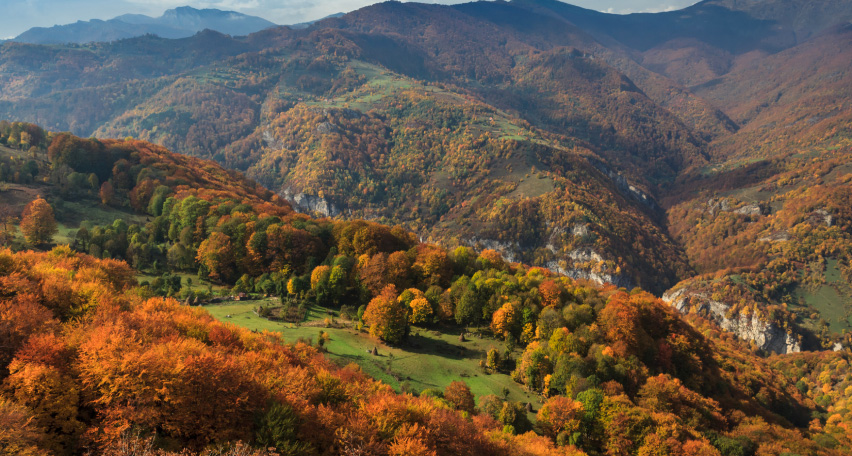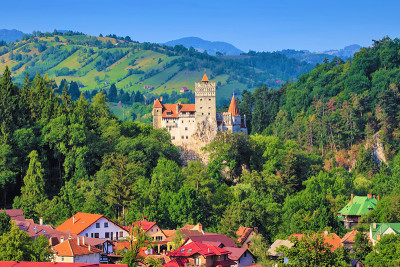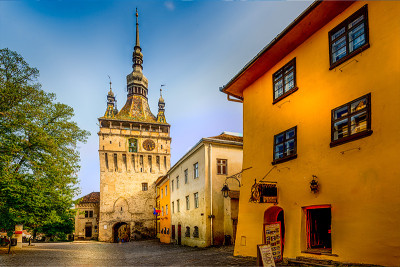Mehedinti County is located in the southwestern part of the country, in the historical region of the Romanian Country, and has the county seat in the city of Drobeta-Turnu Severin. The county is a prosperous one both in landscapes and natural places of rare beauty, on its territory there are two natural national parks, as well as historically, the ruins of the Roman fortresses and of the medieval cities being visible and at present.
Danube’s Big And Small Boilers
The Danube boilers, consisting of the Big and Small Boilers, represent the most spectacular portion of the Danube defile. These include limestone mountains that the defile has shaped over time. This area has been designated a natural reserve due to its caves and oats, but also to the richness of the fauna and flora that lives here, many of which are protected by law.
Inside the reservation, there are numerous caves, among which we can mention the Ponicova Cave or the Veterani Cave, and here you can make different tourist routes with spectacular belvedere areas.
When the level of the Danube falls very low, here, we can see the ruins of the Mraconia Monastery, baptized by the locals as the “underwater monastery,” which was “sacrificed” by the authorities of the time when the Iron Gate I Hydroelectric Power Station.
The same fate also had the Trikule Fortress, a fortress with three towers, which is also in the Danube Boilers reservation, which was built in the 15th century to stop the Ottoman expansion and from which only two towers can be seen today, the rest being flooded, and the third tower being visible only when the level of the river is low.
Decebal Rex
Decebal Rex is a bas-relief carved on a rock on the Romanian shore of the Danube, near the city of Orsova. The sculpture, about 55 meters high, represents the face of the last Dacian king, Decebal.
The idea of realizing this bas-relief belonged to the amateur historian Iosif Constantin Dragan, passionate about the history of the Dacians and the Thracians. The bas-relief is located right in front of the Traiana Tabula, a 2,000-year-old memorial plaque, located on the Serbian bank of the Danube and erected by the Roman emperor Traian to commemorate the victories of the Roman empire over Dacia.
Iron Gates National Park
The Iron Gates National Park covers the territories of Mehedinti and Caras-Severin counties. Here grow mountain plants, boreal plants, and Mediterranean plants. What is characteristic of this natural habitat is the thermal change that causes the plants specific to the mountain areas to descend to low altitudes, and the plants particular to the warm, Mediterranean regions, to ascend to higher heights.
Due to its biodiversity, the Iron Gates National Park has been divided into 17 natural reserves fully protected by law. Inside the park, there are 15 approved tourist routes. During these, tourists can admire the rich flora of the area, collect medicinal plants or climb to belvedere points from where to admire the Danube defile and the Iron Gates I.
The Iron Gate I and II Hydroelectric Power Station, built on the Danube, are also located here. These are the most massive such constructions in Romania, and the energy here is produced and exploited in partnership with the Serbs. With the erection of the hydroelectric plants, the Iron Gates I accumulation lake was also formed, with a vibrant tourist potential.
Orsova
The city of Orsova is worth a visit both because of its history, which dates back to the Dacians and Romans, when the town was known as Dierna, as well as the natural landscape it is surrounded by, being built on the shore of the Iron Gates I and surrounded by hills.
Once in the city, it is worth visiting the Monastery of Saint Ana. Also, in the Ion Dragalina Park, in the center of the town, there is a small island with a promenade, and if you like water rides, from Orsova, you can take trips on the Danube. In the city, there are also traces of the Roman Dierna.
Drobeta Turnu-Severin
Drobeta Turnu – Severin is the residence of Mehedinti County. It dated from the period when Dacia was a Roman province, as proof is the Roman fort, the bridge of Traian, the thermal baths of Drobeta, considered to be the most complicated thermal installations in Dacia, and a Roman amphitheater, discovered in 2010.
Other tourist attractions worth visiting here are the Iron Gate Museum, the water castle, the remains of the medieval Fortress of Severin, which is located in Dragalina Park, but also the other museums and cultural institutions in the city.
Also, if you like to admire the architecture of the cities, you can go to the Cultural Palace Theodor Costescu, one of the emblematic buildings of the city that houses a library, a university and a cinema or on Radu Negru Hall, a shopping center located in Radu Negru Square which was built at the beginning of the 20th century.
Near Drobeta Turnu Severin is the monastery Strehaia, a place of worship, built in the middle of the 17th century, in the court of the ruler Matei Basarab.
Bala Resort
The spa-climatic resort Bala is located near the town of Baia de Arama. This is one of the most visited tourist attractions in the county, as tourists come here for both leisure and treatment. The baths in the sulfurous waters of the resort and the packages in therapeutic mud and with paraffin help to alleviate some rheumatic diseases, of the digestive tract and of the peripheral nervous system.

 ES
ES
 IT
IT
 DE
DE
 FR
FR


